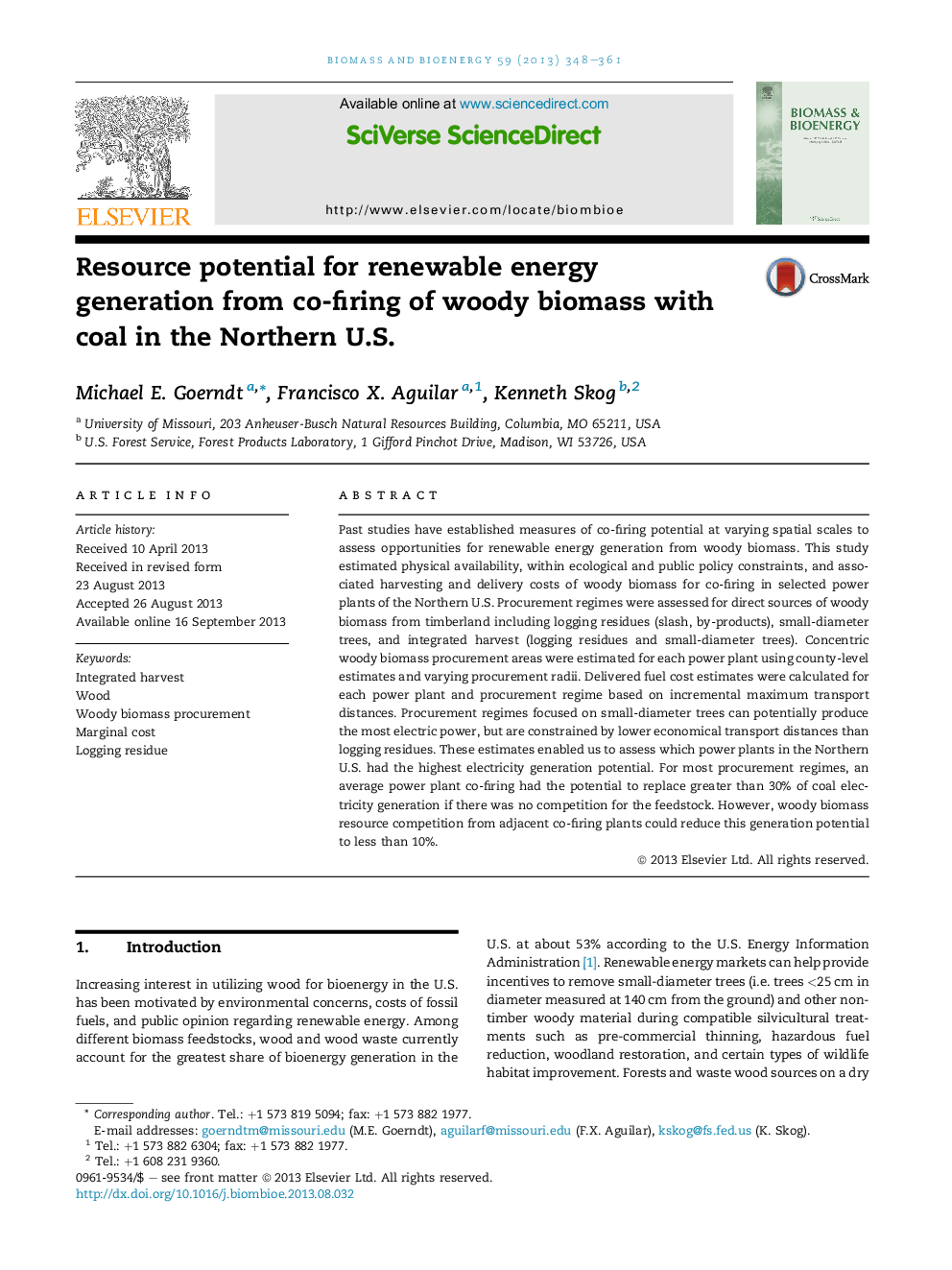| Article ID | Journal | Published Year | Pages | File Type |
|---|---|---|---|---|
| 677035 | Biomass and Bioenergy | 2013 | 14 Pages |
•Marginal delivered costs of woody biomass depended greatly on transportation cost.•Average power plant co-firing without resource competition could potentially replace 30% of coal electricity generation.•Resource competition from adjacent power plants could reduce biomass generation to less than 10% of coal generation.•Most power plants would have to limit maximum biomass transport distance to 80–90 km.•Power plants in the Northeastern states have the greatest overall potential for co-firing.
Past studies have established measures of co-firing potential at varying spatial scales to assess opportunities for renewable energy generation from woody biomass. This study estimated physical availability, within ecological and public policy constraints, and associated harvesting and delivery costs of woody biomass for co-firing in selected power plants of the Northern U.S. Procurement regimes were assessed for direct sources of woody biomass from timberland including logging residues (slash, by-products), small-diameter trees, and integrated harvest (logging residues and small-diameter trees). Concentric woody biomass procurement areas were estimated for each power plant using county-level estimates and varying procurement radii. Delivered fuel cost estimates were calculated for each power plant and procurement regime based on incremental maximum transport distances. Procurement regimes focused on small-diameter trees can potentially produce the most electric power, but are constrained by lower economical transport distances than logging residues. These estimates enabled us to assess which power plants in the Northern U.S. had the highest electricity generation potential. For most procurement regimes, an average power plant co-firing had the potential to replace greater than 30% of coal electricity generation if there was no competition for the feedstock. However, woody biomass resource competition from adjacent co-firing plants could reduce this generation potential to less than 10%.
